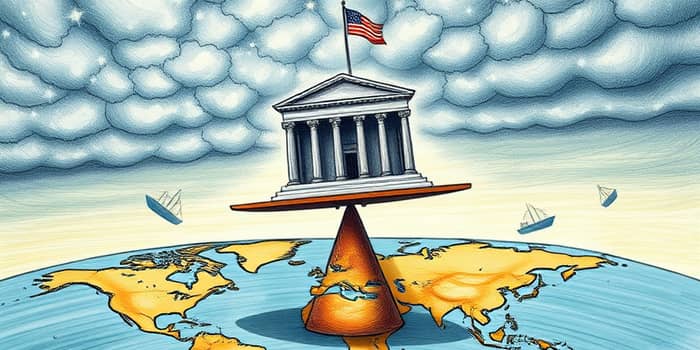
As the global economy decelerates to its weakest pace since 2008, major monetary authorities are recalibrating interest rates and forward guidance. Their actions reflect a delicate balancing act between taming inflation and fostering a recovery in trade and investment.
World Bank projections for 2025 show growth in developing economies below 4 percent, excluding Asia, while global GDP expansion slows to just 2.3 percent. This marks the slowest pace in nearly two decades, driven by faltering trade and sluggish investment.
Heightened tariffs and persistent policy uncertainty have pushed global trade growth under 3 percent, down from 5 percent in the 2000s. At the same time, record-high debt levels constrain fiscal flexibility and raise vulnerability to external shocks.
While some banks hold rates steady, others have initiated cuts to counter a deteriorating outlook. These choices underscore balancing inflation control with growth support in different economic contexts.
Below is a snapshot of current policy rates and recent moves by the world’s leading central banks:
Central banks cite several common factors influencing their decisions:
Rate cuts offer lower borrowing costs, but the broader slowdown dampens credit growth. Mortgage and loan rates may ease, yet banks often tighten lending standards amid uncertain conditions.
Business investment decisions hinge on the interplay of cheaper finance and subdued demand. Companies may delay expansions or shift toward cost-saving measures instead of embarking on new projects.
Policymakers stress data-driven policy adjustments in real time. Further easing may occur if growth deteriorates, while unexpected inflation upticks could trigger renewed tightening.
Geopolitical flare-ups or fresh trade barriers remain upside threats to prices and supply chains. Conversely, a rapid recovery in investment or a pickup in global trade could prompt central banks to pause or even reverse cuts.
Many emerging economies benefit from strengthened monetary frameworks but still contend with record-high global debt levels and volatile capital flows. Lower global rates can ease external financing costs, yet weaker demand for exports undercuts growth prospects.
Policymakers in these regions must navigate a narrow path, using reserves and macroprudential tools to fend off currency pressures while supporting domestic credit.
This era of slowing growth demands mediating between risk and opportunity. Central banks are neither fully in easing mode nor preparing for aggressive hikes. Instead, a nuanced, data-dependent stance prevails.
For households, businesses, and investors, understanding these policy shifts is crucial. Adapting strategies to variable borrowing costs, uncertain trade conditions, and evolving central bank guidance will be key to thriving in a subdued global economy.
References













